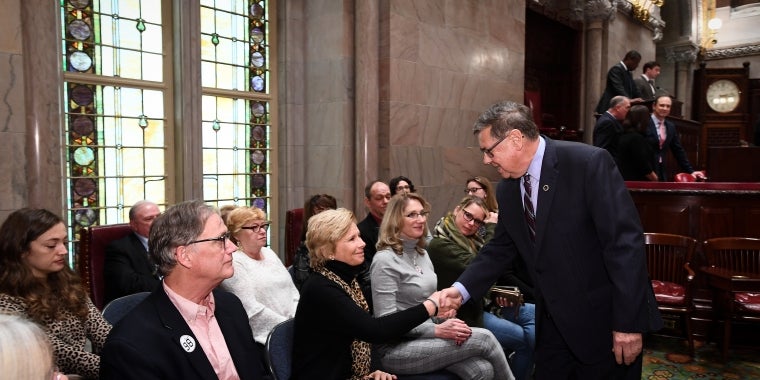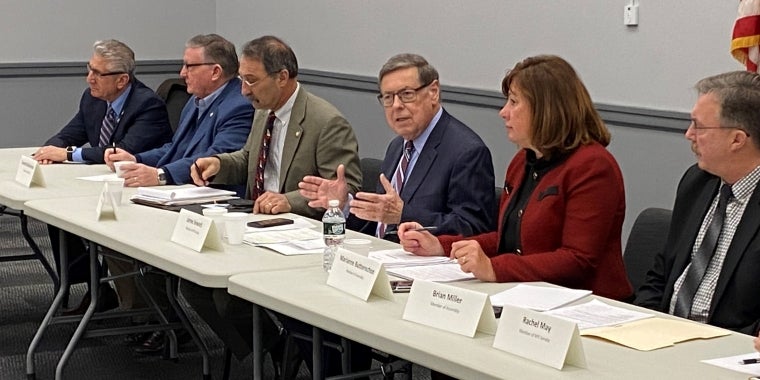
New Open Burning Regulations
James L. Seward
September 15, 2009
-
ISSUE:
- Environment
Express Terms
6 NYCRR Part 215, Open Fires
6 NYCRR Part 191, Forest Fire Prevention
6 NYCRR Part 621, Uniform Procedures
6 NYCRR Part 215, Open Fires
Existing Part 215 is repealed.
A new Part 215 is added as follows:
215.1 Definitions
215.2 Prohibitions
215.3 Exceptions and restricted burning
Section 215.1 Definitions.
(a) Open Fire - Any outdoor fire or outdoor smoke producing process from which air contaminants are emitted directly into the outdoor atmosphere. Open fires include burning in barrels or modified barrels. Open fires do not include burning in outdoor furnaces or boilers that are used to heat buildings when the devices are actually used for such purpose.
(b) Agricultural Land – The land and on-farm buildings, equipment, manure processing and handling facilities, and practices that contribute to the production, preparation and marketing of crops, livestock and livestock products as a commercial enterprise, including a ‘commercial horse boarding operation’ and ‘timber processing’. Such farm operation may consist of one or more parcels of owned or rented land, which parcels may be contiguous or noncontiguous to each other.
(c) Camp Fire - A camp fire or any other outdoor open fire less than three feet in height, and less than four feet in length and width or diameter.
(d) Agricultural Waste - Any waste from naturally grown products such as vines, trees and branches from orchards, leaves and stubble. In addition, any fully organic waste either grown or generated on the premises, including but not limited to paper feed bags, wood shavings used for livestock bedding, bailing twine, and other non-plastic materials. Agricultural waste does not include pesticide containers, fertilizer bags, large plastic storage bags (including bags commonly known as "Ag bags"), offal, tires, plastic feed bags, and other plastic or synthetic materials.
(e) Acquired Structure - A structure donated or loaned from a property owner for the purpose of conducting fire training.
(f) Untreated wood - For the purposes of this Part, any wood or lumber which is not chemically treated, coated, stained, sealed, glued or otherwise adulterated. Untreated wood does not include such materials as pressure treated lumber, plywood, particle board, fiberboard, and oriented strand board.
(g) On-site burning - The burning of material, grown or generated on a particular property, in an open fire on the same property. For purposes of this definition, the "same property" shall include only property that is geographically contiguous and under the control or ownership of the same person.
Section 215.2 Prohibitions.
Except as allowed by section 215.3 of this Part, no person shall burn, cause, suffer, allow or permit the burning of any materials in an open fire.
Section 215.3 Exceptions and restricted burning.
Burning in an open fire, provided it is not contrary to other law or regulation, will be allowed as follows:
(a) On-site burning in any town with a total population less than 20,000 of downed limbs and branches (including branches with attached leaves or needles) less than six inches in diameter and eight feet in length between May 15th and the following March 15th.
For the purposes of this subdivision, the "total population" of a town shall include the population of any village or portion thereof located within the town. However, this subdivision shall not be construed to allow burning within any village.
(b) Barbecue grills, maple sugar arches and similar outdoor cooking devices when actually used for cooking or processing food.
(c) Small fires used for cooking and camp fires provided that only charcoal or untreated wood is used as fuel and the fire is not left unattended until extinguished.
(d) On-site burning of agricultural wastes as part of a valid agricultural operation on contiguous agricultural lands larger than five acres actively devoted to agricultural or horticultural use, provided such waste is actually grown or generated on those lands and such waste is capable of being fully burned within a 24-hour period.
(e) The use of liquid petroleum fueled smudge pots to prevent frost damage to crops.
(f) Ceremonial or celebratory bonfires where not otherwise prohibited by law, provided that only untreated wood or other agricultural products are used as fuel and the fire is not left unattended until extinguished.
(g) Small fires that are used to dispose of a flag or religious item, and small fires or other smoke producing process where not otherwise prohibited by law that are used in connection with a religious ceremony.
(h) Burning on an emergency basis of explosive or other dangerous or contraband materials by police or other public safety organization.
(i) Prescribed burns performed according to Part 194 of this Title.
(j) Fire training, including firefighting, fire rescue, and fire/arson investigation training, performed under applicable rules and guidelines of the New York State Department of State’s Office of Fire Prevention and Control. For fire training performed on acquired structures, the structures must be emptied and stripped of any material that is toxic, hazardous or likely to emit toxic smoke (such as asbestos, asphalt shingles and vinyl siding or other vinyl products) prior to burning and must be at least 300 feet from other occupied structures. No more than one structure per lot or within a 300 foot radius (whichever is bigger) may be burned in a training exercise.
(k) Individual open fires as approved by the Director of the Division of Air Resources as may be required in response to an outbreak of a plant or animal disease upon request by the Commissioner of the Department of Agriculture and Markets, or for the destruction of invasive plant and insect species.
(l) Individual open fires that are otherwise authorized under the environmental conservation law, or by rule or regulation of the Department.
6 NYCRR Part 191, Forest Fire Prevention
Sections 191.1 and 191.5 are repealed
Sections 191.2-191.4 are renumbered to be sections 191.1-191.3
6 NYCRR Part 621, Uniform Procedures
Subdivision (g) of section 621.1 is amended to read as follows:
(g) Air Pollution Control, ECL article 19, (implemented by 6 NYCRR Parts 201, 203, [215,] and 231): including construction and operation of a new emission source or a modification to an existing emission source of air contamination, and construction of indirect sources of air contamination [and restricted open burning for air pollution control purposes (Note: permits for restricted open burning for the purpose of forest fire control, under authority of section 9-1105 of the Environmental Conservation Law and 6 NYCRR Part 191, are not subject to this Part)];
Share this Article or Press Release
Newsroom
Go to NewsroomSenate Passes Bills to Increase Limo Safety
January 14, 2020

Statement on Governor's State of the State Address
January 8, 2020

Mohawk Valley Nine Flood Roundtable
January 7, 2020

